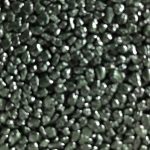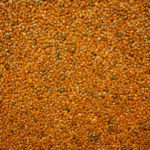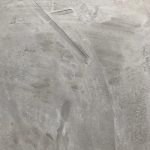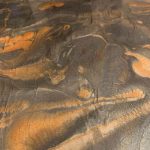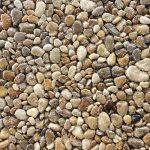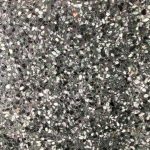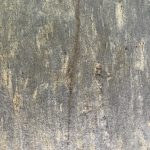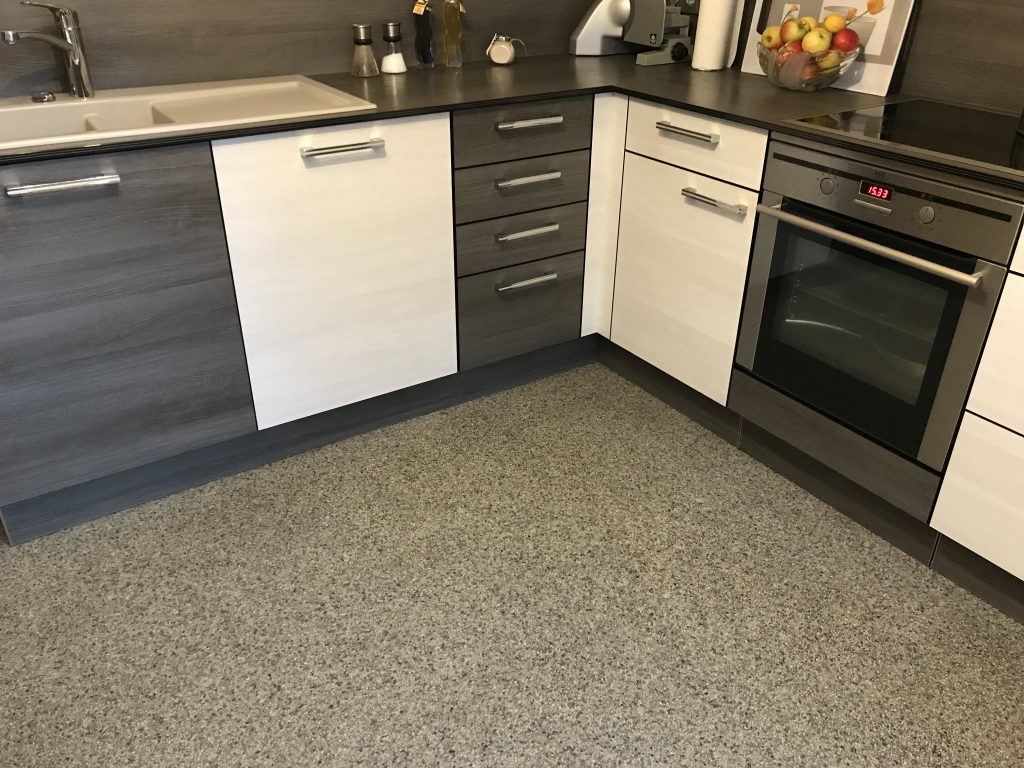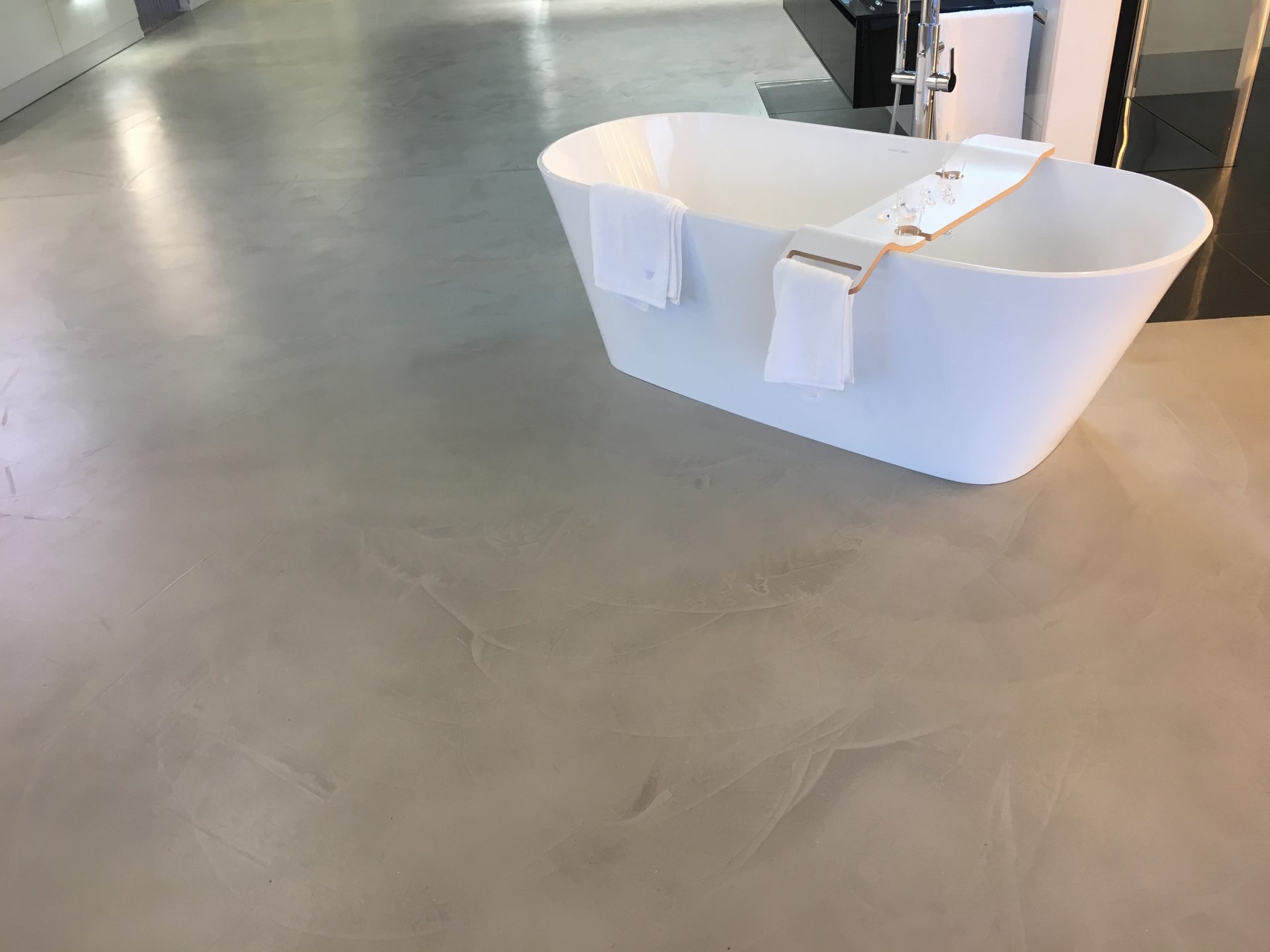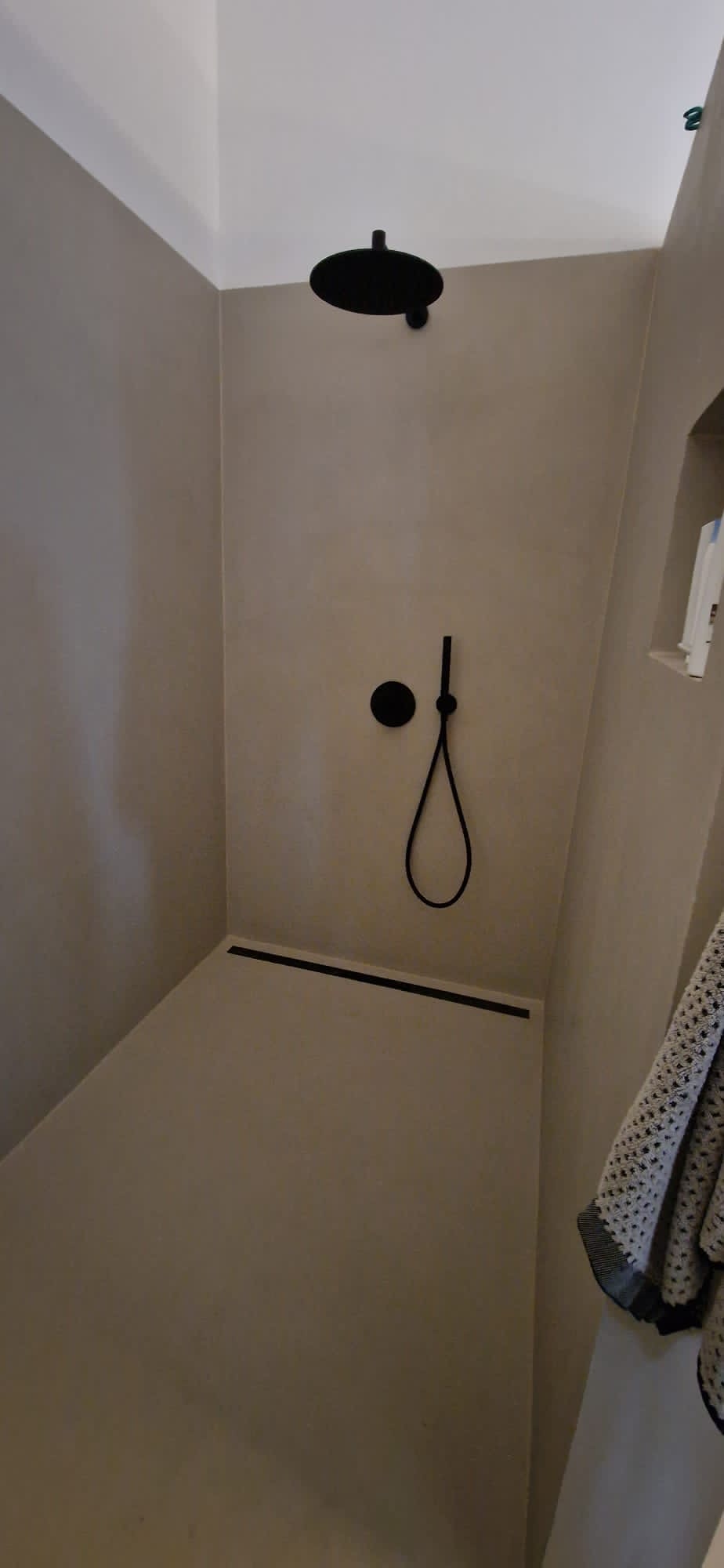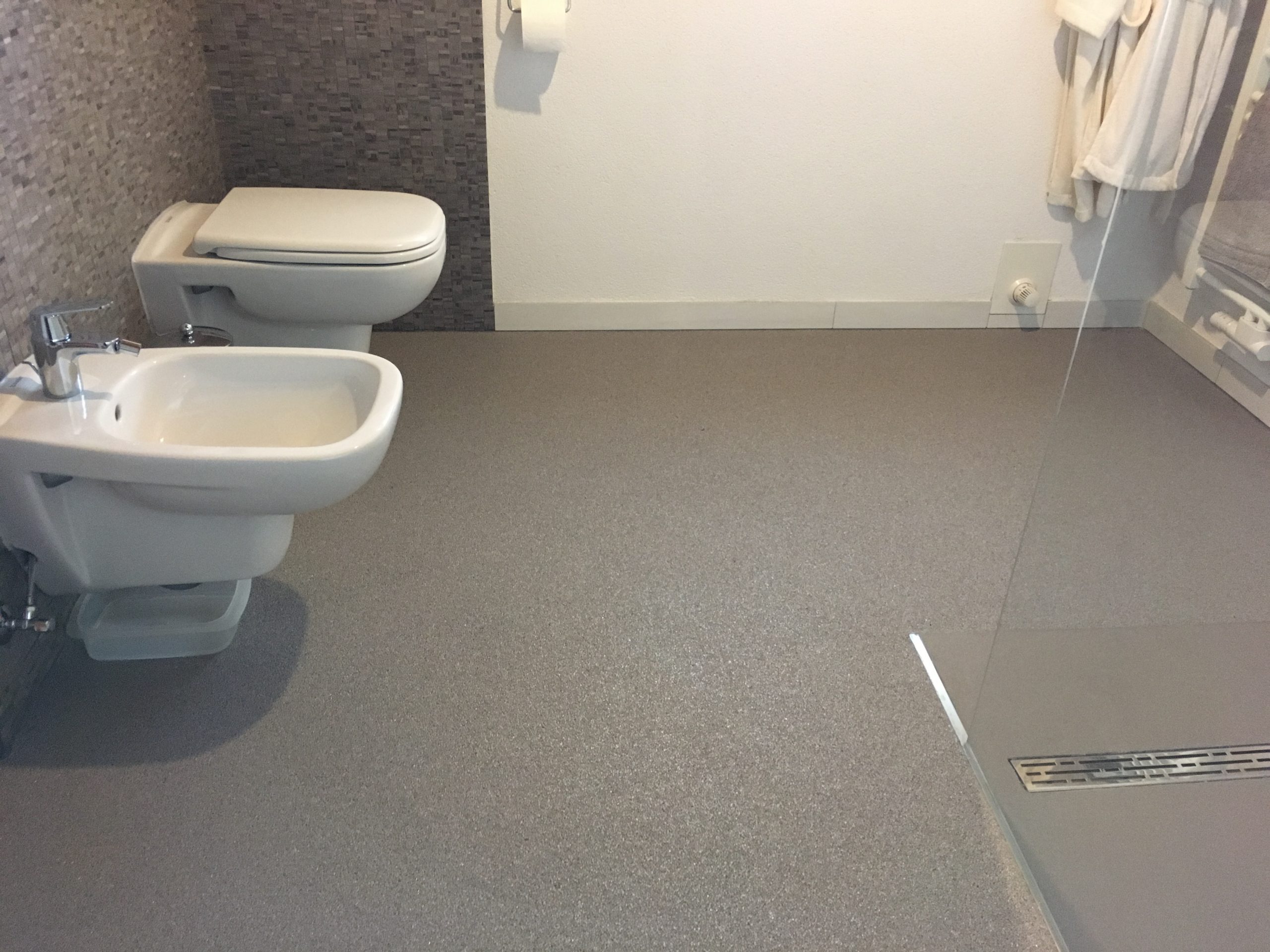A stone carpet kitchen floor is a possible option when it comes to a seamless coating. The system offers advantages in private kitchens, industrial kitchens and outdoor kitchens.

A stone-carpeted kitchen combines comfort with good design Why a stone-carpeted kitchen makes sense
With a Qubo® stone carpet, you can bring a natural floor covering with many advantages into your kitchen. It is seamless, robust, hygienic and easy to clean as well as warm to the feet, allergy-friendly and durable.
When used in industrial kitchens, special materials and sealants can be used to meet all the necessary requirements for slip resistance and hygiene.
Read about other benefits in our article on gravel floors for indoor use.
A stone-carpeted kitchen is a great alternative to kitchens with tiled floors. The seamless surface makes it easy to clean. The system is also slip-resistant and resilient. As a result, the Qubo® offers good walking comfort.
The small pebbles – the main component of a gravel floor – made of marble or quartz gravel are available in many hundreds of different colors for a beautiful look. These can of course be combined with each other. Color-contrasting gravel skirting boards are just as possible as a mottled floor made of two or more gravel colors. Metallic and pearlescent colors are also available at Colorquarz . Mica additives can be mixed into the pore filler, which is responsible for the hygienic surface, particularly in the kitchen and bathroom area. Various seals decide whether the floor should have a matt or glossy finish.
When used in industrial kitchens, special materials and sealants can be used to meet all the necessary requirements for slip resistance and hygiene.
Patterns and motifs in stone carpet kitchen flooring Suitable for stone carpet kitchens and other areas of application
In addition to the extensive design options, the airbrush technique also offers a very special highlight. It can be used to integrate patterns and motifs into the floor of the stone-carpeted kitchen. These motifs, called Qubo® Painting, are created in the sz art of airbrush studio in advance of the construction project. The same material is used to create the stone carpet kitchen. This allows the artwork to blend seamlessly into the floor.
*** Translated with www.DeepL.com/Translator (free version) ***
The motifs are extremely abrasion-resistant. This is why logos can also be incorporated into garages using this technique.
Reasons to renovate with a gravel floor Renovation of old buildings
Thanks to its seamless surface and quick installation, stone carpet is an excellent choice for renovating kitchens in old buildings:
- it can be plastered over existing floors such as tiles etc.
- can also be used to rework wooden floors and stairs by filling in a fabric mat for stabilization.
- can be used to compensate for slight unevenness and to accept sloping floor plans without wastage.
- the laid floor can be walked on after just 12 hours.
But it’s not just floors that can be coated with this innovative material. The material is also ideal for walls, skirting boards and window sills.
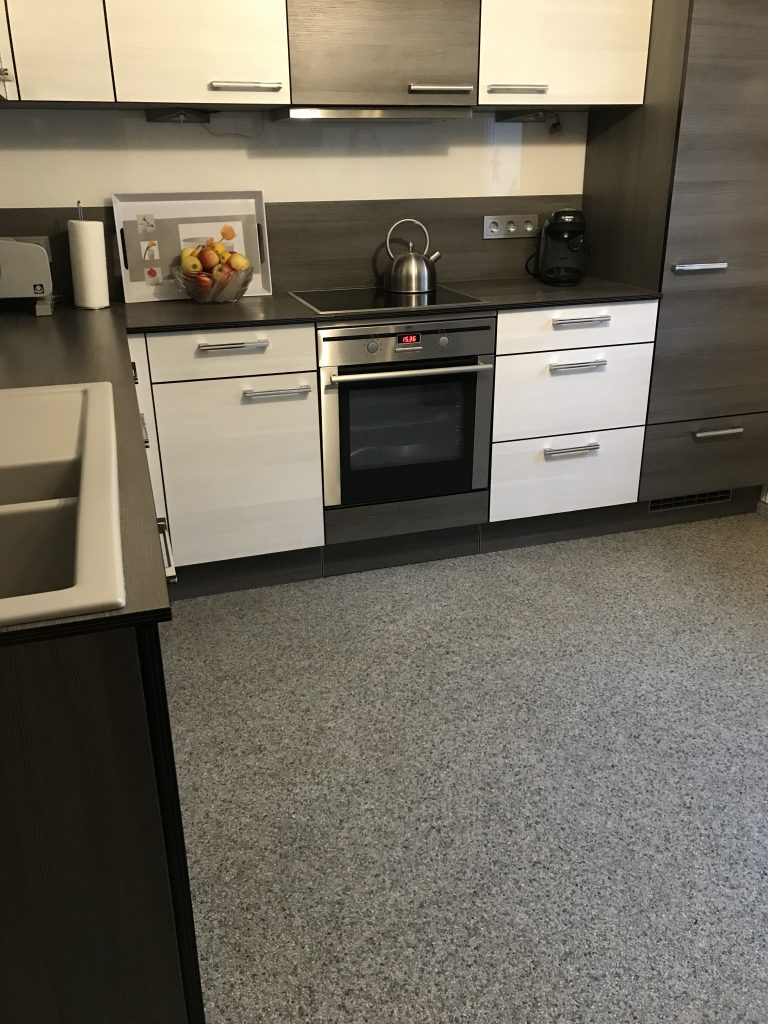
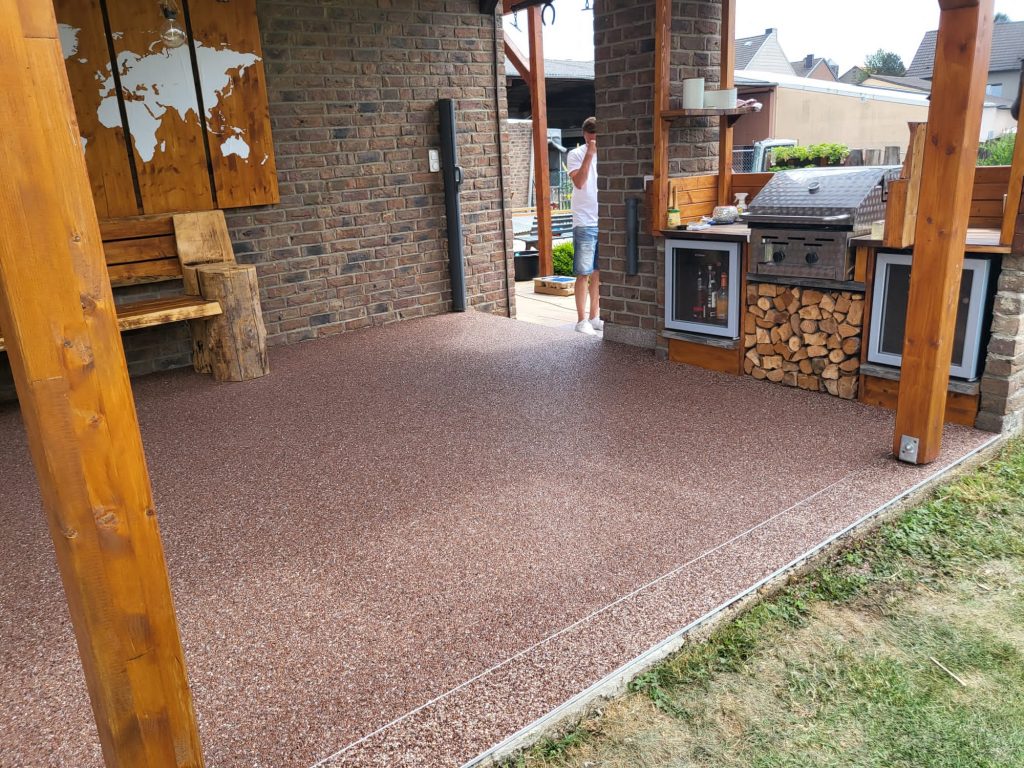
Also ideal for outdoor kitchens Stone carpet outdoor kitchen
A stone carpet kitchen can also be realized in the outdoor area, as the gravel floor can be used both indoors and outdoors. This means that event kitchens and permanently installed barbecues with work surfaces can be realized without having to forego the many advantages of a gravel floor.
Read more about marble and quartz gravel floors on balconies and terraces.
Start planning your kitchen floor now and get in touch with Quarzkiesboden Zimmermann. A non-binding cost estimate will give you an initial overview. We will be happy to discuss the exact planning with you in person. Together we will also ensure that your…
… for a strong appearance!
Non-binding cost estimate and advice
First and foremost, the area of application determines the pricing. However, the costs depend on many different factors, including
- the type of binder required
-
from the primer
-
the choice of skirting boards, for example, if these are also made of gravel
-
from the labor costs of the professional installer
-
the size of the area to be laid
In outdoor areas, the costs are higher because the substrate needs to be sealed and the marble gravel needs to be laid with a UV-resistant binder.
In most cases,coloured quartz or marble gravel s used for the production of gravel floors. However, there are considerable differences in quality here, for example in the dust content of the material or the types of marble used.Mica additives and various precious and semi-precious stones can be added, but this is another cost factor.
Colored quartz is available in the following grain sizes:
-
1–2 mm
-
2–3 mm
- 3–4 mm
Marble gravel is available in the following grain sizes:
-
1–4 mm
-
4–8 mm
- 8–15 mm
Of course, the choice of gravel grain size has an effect on the laying thickness of the gravel floor.
The laying thickness of the floor depends on the gravel grain size and the area of application. Normal gravel with a grain size of 2 – 3 mm can be laid with a thickness of 6 mm in indoor areas such as stone carpets in kitchens.
An installation thickness of 8 mm is used outdoors and on stairs indoors due to the load.
Finally, 10 mm of material is applied to external stairs.
Vertical surfaces such as risers, skirting boards and walls are always laid in 6 mm.
The larger the grain size of the gravel, the higher the installation height of the floor covering. This means that more gravel and additional binder is required per square metre. The price changes accordingly.
The primer forms the bonding bridge between the building structure and the gravel floor. The material can be applied to almost any substrate, for example tiles, wood, stone, concrete and metal. Different substrates require different preparation steps.
On tiles and metal, for example, a primer is required to give the smooth surface stability during installation.
On porous stone and absorbent screed, the appropriate primer must be used to prevent the binder from being absorbed, which is intended to ensure that the pebbles remain in place.
To coat wooden planks with a gravel floor, the movement of the planks against each other must first be stopped. To do this, the installer first applies a mesh mat to the wooden floor. Once the filler has dried, the gravel floor is applied.
Especially in stone carpeted kitchens and bathrooms, the gravel floor should be fitted with a pore seal for reasons of hygiene. It prevents leaked, sticky liquids from penetrating the gravel floor. While spilt liquids are difficult to remove from an open floor, the pore seal enables effortless cleaning by wet mopping.
Dogs, cats and co. feel much more comfortable on the textured surface of a gravel floor than on smooth floor coverings such as tiles or laminate, as they do not slip on stone carpets. However, it is advisable to cover the floor with a pore seal to ensure an easily wipeable surface.
-
High drainage capacity due to open-pored structure
-
Quick drying in sun and wind
-
Easy to clean and self-cleaning
-
100% frostsicher
-
UV-stabil
- Gentle, massage-like walking comfort when walking barefoot
The most important thing when laying gravel floors in outdoor areas is preparing the substrate. This ensures the durability of the finished floor.
On the one hand, this is because a primed subfloor provides significantly increased adhesion for the filled gravel. On the other hand, a sealing layer keeps rainwater away from the building structure, for example, which supports long-term durability.
Options for sealing building structures are
- Sealing using an epoxy resin seal with sealing membrane
- Sealing using a flex sealing slurry
In order to drain rainwater effectively, the floor covering is laid with a gradient of at least 1.5%.
No, in outdoor areas, the gravel flooring is always laid as an open system – even in outdoor stone carpet kitchens – to ensure drainage capacity and thus the drainage of rainwater. This makes them 100% frost-proof and therefore ideal as pool surrounds and as a covering for balconies, terraces, entrance areas, outdoor steps and loggias.
We would like to point out that we do not recommend stone carpets in the direct shower area. The reasons for this can be found in the basic structure of the floor and the wet room. Just as the tile adhesive under a tile does not form a completely flat surface without air pockets, pores also remain underneath a sealed stone carpet.
If, after years, a silicone seam leaks and water from a fitting, for example, penetrates between the wall or floor covering and the seal of the building structure, the transparent pore seal reacts with the water and forms white stains. As these occur underneath the seal, they cannot be wiped away or removed by drying.
This is why insurance companies do not classify stone carpets as suitable for wet rooms and do not replace such coatings in the event of damage. We therefore recommend microcement coatings for showers. With these, there is no water-bearing layer between the floor covering and the substrate, so there is no risk of moisture penetration. Due to the many customization options for microcement, it can also be combined with stone carpeting. Just get in touch with us.
Yes. A staircase coated with stone carpet already has a slip resistance class of R10 after installation.
Special sealants can be used to increase the slip resistance class to R11 or R12.
Depending on the design of the staircase, the renovation takes 3-5 days. In special cases, installation is also possible within an even shorter time. For a more precise determination of the duration of your construction project , simply contact us at.
All our gravel floors use natural stone as the base material. This is why many people refer to the system as a natural stone carpet.
The gravel is available natural and colored.
FAQ
Details and facts, key figures and explanations – here you will find answers to frequently asked questions about our Qubo® coating systems. If any details remain unclear, simply contact us.
We will be happy to advise you personally and promptly.

